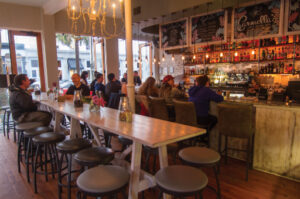Charleston Reflects on the Lessons of a Century-Old Flu Epidemic
Charleston is basking in a generally sunny day today, with temperatures climbing up to a delightful 82°F. The light winds from the southwest provide a gentle breeze, making it a perfect day to be out and about. However, as some afternoon clouds drift in and out, it’s a friendly reminder to consider our health, especially as we reflect on a gripping chapter from our past.
Have you had your flu shot yet? If you haven’t, this might just be the nudge you need to make that appointment. Historical events can often give us valuable insight into our current situation, and today, we turn our gaze back to September 16, 1918, when Charleston first documented cases of the Spanish Flu. This epidemic, known as one of the most devastating in history, caught not only the nation but the world by surprise.
A Storm on the Horizon
After the Navy base reported the first case of this deadly virus, the situation quickly escalated. In just a matter of months, Charleston saw a staggering number of 7,154 confirmed cases within its city limits, leading to 291 deaths. However, enthusiasts and historians alike agree that these figures were likely underreported; the true toll could have been between 15,000 to 18,000 cases. That’s a hefty number for a city bustling with life and cultural activity.
Charleston, like many places in the United States, faced unique challenges during the flu’s invasion. As President Woodrow Wilson called for a war to end all wars, local recruits deployed overseas, where they likely contracted the flu. These soldiers returned home, unknowingly bringing the virus with them, and it spread rapidly within the tight confines of military life and beyond.
Attempts at Containment
Immediately after the first case was reported, the Navy base imposed a basewide quarantine. Just two days later, the local paper would declare, “Spanish Flu Is Under Control,” though only the day after, 350 more cases were reported. It was easy to see that things were spiraling quickly.
Interestingly, while the Navy had quarantined its personnel, the Citadel cadets—who trained alongside them—were not included in the order. Soon enough, their infirmary filled with sick students, and the campus had to shut down. The officials suggested measures that might sound familiar to us today, like walking to work instead of riding crowded trolleys and practicing some form of social distancing.
The Warnings Ignored
Despite the concern mounting in Charleston, Governor Richard Manning pushed ahead with an October 3 military parade to rally support for the war effort. Unfortunately, this gathering not only increased camaraderie but also allowed the flu to race freely through the crowd and into the larger community. Soon after, the College of Charleston suspended its classes, and other educational institutions started sending children home.
By October 6, things were looking grim. Mayor Tristram Hyde took swift action, announcing closures of all public spaces. Churches, theater performances, playgrounds—everything deemed unnecessary activity came to a halt. Incredibly, even outdoor gatherings with more than four people were prohibited. Amid this chaos, health officials continued their fundraising efforts door-to-door, albeit while spreading the very virus they sought to combat.
Community Response and Resilience
This epidemic knows no boundaries. The young, the old, various races, and different social classes were all equally affected. In those trying times, the American Red Cross stepped in with mostly local women volunteers who took over the medical baton, treating the sick and helping those in need. And when the flu escalated into pneumonia for many, Charleston resorted to an interesting solution: the dispensation of whiskey by prescription. Yes, you read that right!
In a notable act of compassion, a public cafeteria opened its doors, serving hot and nutritious meals to those affected. This was a community coming together in a time of crisis, ensuring that everyone—especially those who couldn’t afford it—received proper sustenance.
Learning from History
By the end of the month, the surge in cases began to decline, and quarantines eventually lifted as November rolled in. Families celebrated the end of such a taxing time, and as the city danced in joy after the war, one thing remained clear: history has plenty to teach us about health and community.
As we navigate our own challenges today, let’s take a moment to appreciate the lessons from the past. Perhaps, this year, it’s time to roll up your sleeve and get that flu shot. After all, protecting ourselves means protecting our community, and that’s a lesson worth holding dear.
For those of you wondering about today’s weather, even as night falls with a low of 68°F, it remains cozy enough for a good book and a warm drink. As always, stay safe!



























